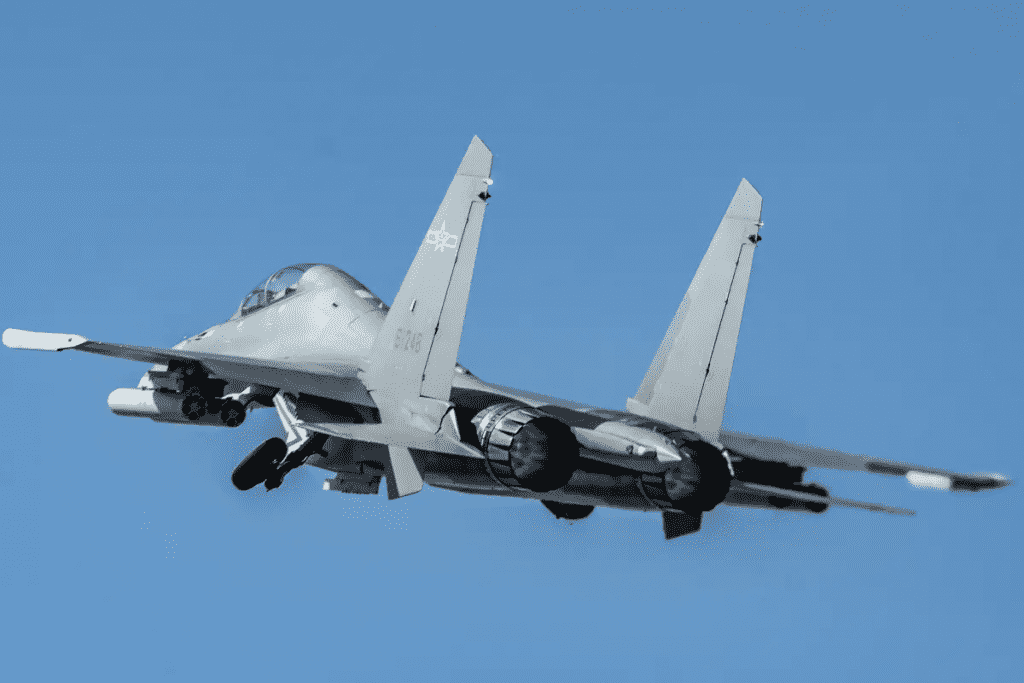China and the US are in the arms race and are going head-to-head in all spheres. So much so that the head of Air Combat Command (ACC), Gen. Mark D. Kelly, is of the view that the Chinese 6th Gen Fighter program and the U.S. Air Force’s Next Generation Air Dominance program, or NGAD, are bound to be completed almost in the same time-space.
China is secretive about the capabilities of its programs, but the NGAD program is much more than a sixth-gen manned fighter. It’s also planned to include collaborative drones to work alongside manned aircraft, plus new weapons, sensors, and communications architecture. Now, if China manages to keep pace, it will also have all these abilities by 2030, the year by which USAF wants to induct the NGAD as a combat-worthy asset.

In a recent address at the War Zone, Kelly spoke about China’s progress in the 6th gen sphere; he said that “China looks at sixth-generation air power, including future human-crewed fighter aircraft, greatly the way we see it: an exponential reduction in signature, the exponential acceleration of processing power and sensing.”
Kelly also contended that the Chinese approach should allow them to “reprogram at the speed of relevance.” However, he also highlighted that China has ample experience in the iterative development of interconnected families of fighter jets, chiefly its reworkings of the Soviet-designed Flanker series.
“They started with Su-27, morph into Su-30, then their own J-16 [and then the] Su-35,” Kelly said.

China started buying Russian fighter jets in 1992 with the Su-27s, and later in 2000, China procured the Su-30MKK from Russia. China started producing the Su-27s under license (as the J-11 and J-11A) before it began developing the homegrown J-11B with multirole capabilities, plus Chinese engines and avionics.
Subsequently, with the base capability achieved, China started developing the two-seat J-16, essentially a Chinese version of the advanced Su-30MKK. Finally, China did the same with Su 33 and set it as the multirole J-15.

Kelly also commented on the Chinese purchase of the Russian Su-35s out of the blue. He tried to make sense of the small procurement by suggesting that “China wanted a closer look at the Su-35’s thrust-vectoring engines, as well as gain insight into one of Russia’s frontline assets, its weapons, and electronic warfare systems.” An additional benefit will be the fact that the Chinese would be able to draw intimate comparisons between what they are developing and what Russia possesses.
The Su fighter jets are part of the flanker family, and Kelly suggests the iterative experience China has will assist her in developing a capability like the US NGAD. He also said that China might edge past the US in acquiring the 6th Gen Fighters.
He said, “I would like to see the USAF get to sixth-gen air dominance at least a month prior to our competitors.” Kelly also stated, “Other than having the similar potential to the NGAD, China can master the advanced levels of stealth required for sixth-generation platforms and that this was also part of the iterative approach.”
Kelly opines that China has set a course to build a first-class air force, and with the development of the 6th Gen systems, it would become a force to be reckoned with.
It is also an open secret that China is developing uncrewed combat aerial vehicles (UCAVs) that could have potential applications within an NGAD-style architecture. Furthermore, the Chinese military aviation expert Andreas Rupprecht told The War Zone about the UAV development systems “We know that there is a project which aims for service entry around 2035,” Rupprecht additionally said that “Interestingly, if they hold to that service-entry date of 2035, we should see a maiden flight at least by 2026–28.”
Considering the systems’ sources and development, it seems almost sure that China is already engaged in preliminary testing of different manned fighter configurations. Mysterious tailless vehicles were seen in Oct last year at a CAC facility, perhaps a mock vehicle for demonstrations of the 6th Gen system. We know that the U.S. Air Force, for its part, flew a prototype for the NGAD program in 2020.
“Allegedly, since 2018, CAC and its related 611 Institutes have been working on developing key technologies for the next-generation fighter,” Rupprecht said.
These technologies are poised to make the Chinese air force capable of a new radar, exotic propulsion systems including variable-cycle engines, and directed-energy weapons. In an interview dating back to 2019, Wang, CAC’s chief, highlighted the ability to team with drones, artificial intelligence, enhanced stealth, and advanced sensors.
In a nutshell, the Chinese are in ascendancy now as far as air force-related technology is concerned. However, the scores of other underdeveloped programs, primarily the next-generation manned fighters and related air combat systems, would be intriguing to see as they would put the two Giants (US and PRC) at a state of near parity in air.


